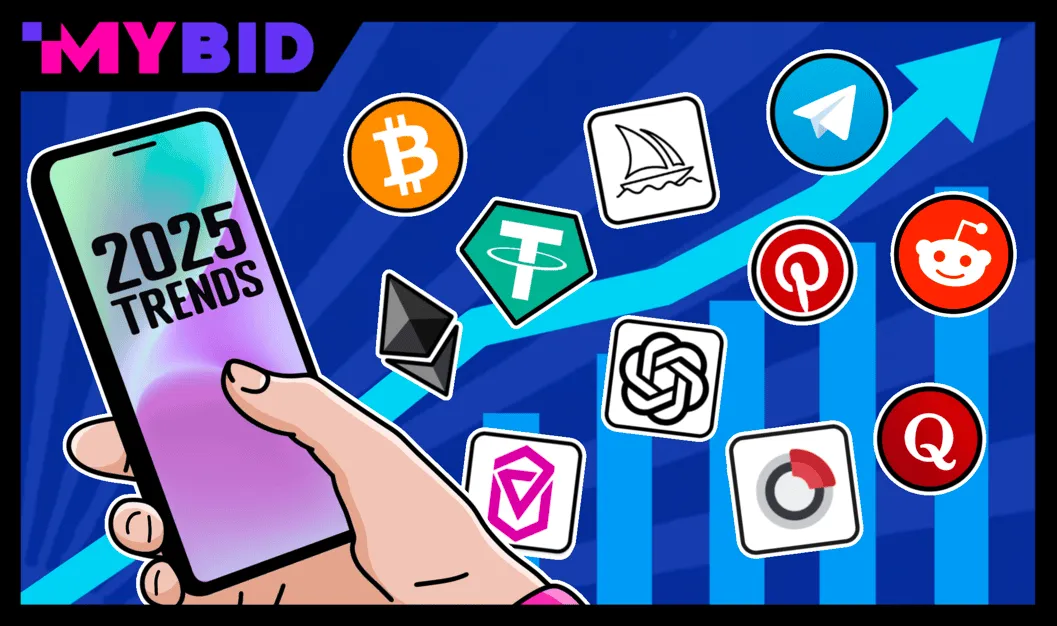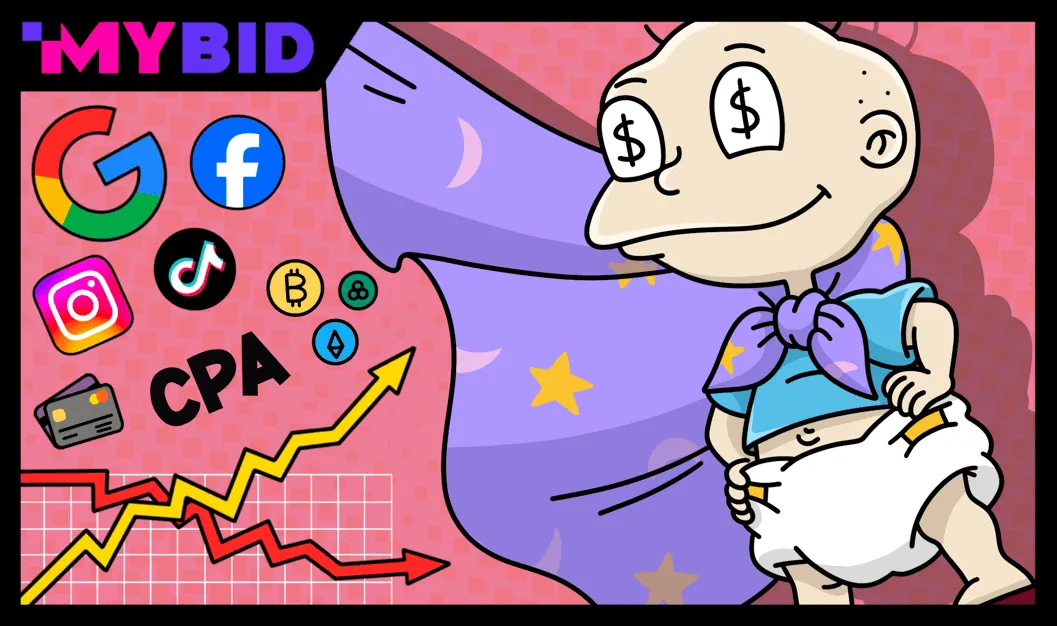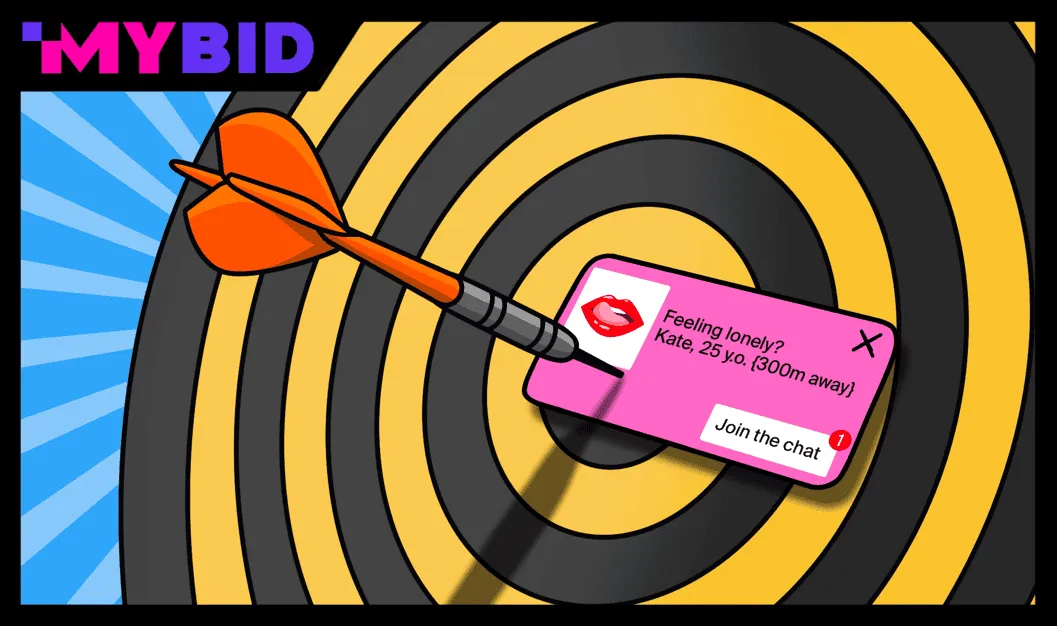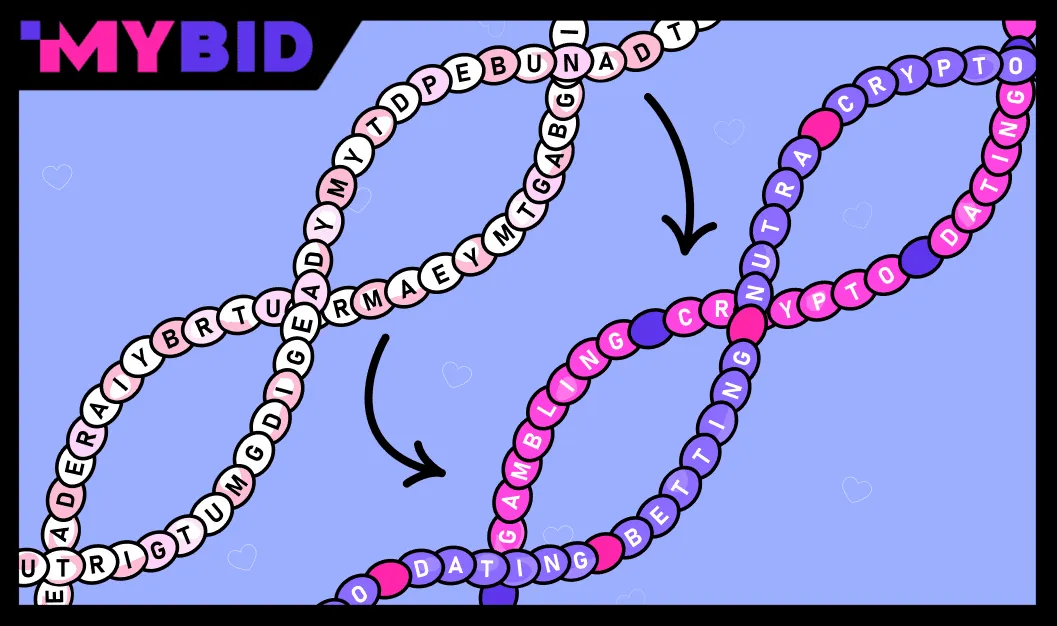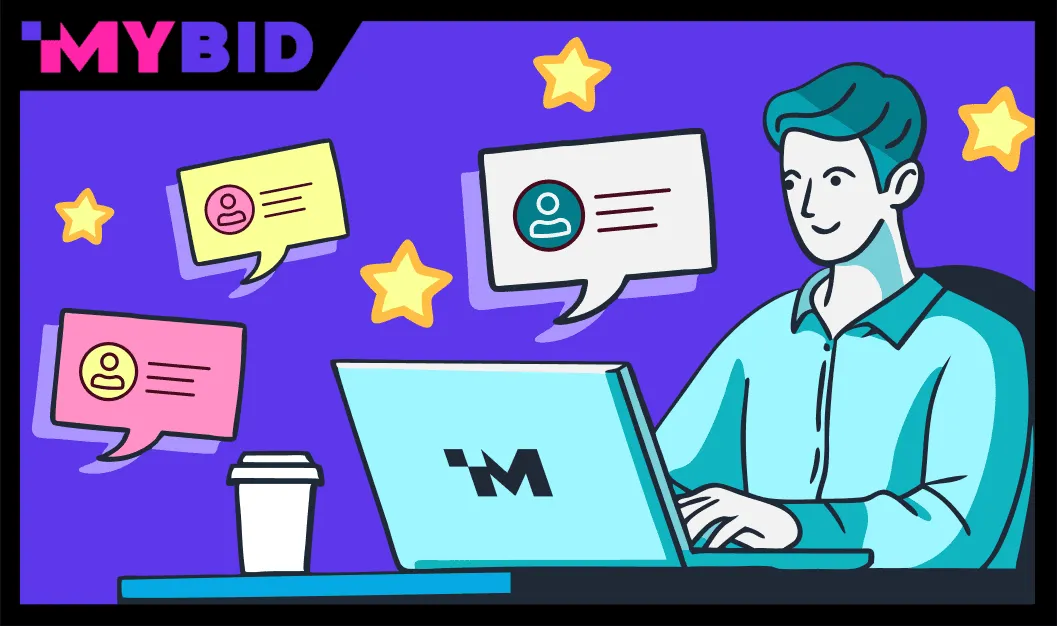In this article, we'll explain CPA marketing in simple terms. You'll get answers to questions like: What is CPA marketing, what are CPA networks, how does the CPA marketing model work, and how does it generate traffic? We'll also explain what kinds of products you can promote using the CPA marketing model, and what types of affiliate marketing certain businesses don't pair well with.

What is CPA marketing?
CPA marketing is a part of the broader affiliate marketing field, where affiliates promote products or services and earn commissions for their efforts. CPA stands for "cost per action" or "price per action." In this digital marketing model, the advertiser/ business owner gives their product to an affiliate marketer to promote. In exchange, they guarantee payment for a specific targeted action. So the advertiser doesn't waste their marketing budget - they only pay for the results they want. The affiliate marketer can monetize their existing traffic, or their ability to drive new traffic to a product people want.
CPA online marketing usually involves an intermediary called an affiliate network. This intermediary aggregates the advertiser's offers, recruits affiliate marketers, and facilitates payments between them.
Joining CPA networks as an affiliate is quite easy. Just sign up to a few of them and wait for approval. Some CPA networks offer instant approval for new affiliates, but the best CPA network must have a vetting process that takes a few days to approve new affiliates.
How the CPA model works
Here's how the CPA marketing model works: Say there's an advertiser/ business owner who wants to sell their products. They partner up with a CPA network to handle marketing duties. For each item sold, they're willing to pay a fixed rate or percentage of the sale price.
The CPA network creates an offer explaining how every affiliate/ CPA marketer will get paid, what kind of traffic the advertiser will accept, how you can and can't promote the product, etc. They also develop landing pages, pre-landing pages, and promotional materials showcasing the product's features and benefits.
Affiliates can then request for a private affiliate link to promote the active offers that listed by the affiliate networks on behalf of the advertiser/ business owners.
So, CPA affiliate networks are designed for affiliates and advertisers, providing them with a structured environment to collaborate.
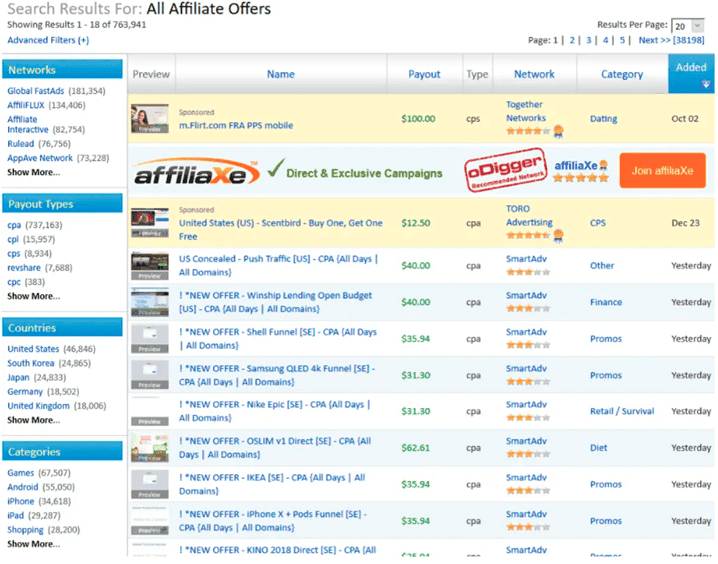
The CPA affiliate network acts as a middle ground between the affiliate and the advertiser. They ensure both parties adhere to their agreements - assuming the CPA network operates above the board and doesn't deceive their partners.
Why CPA marketing is a win-win strategy?
With the CPA model, all parties profit. Say an advertiser manufactures a product for $40 and sells it for $100 - that's a 50% profit margin. So they're open to paying $30 for advertising. They net $30 profit without the overhead of an in-house marketing team, strategy development, or risky expenditures on advertising.
The CPA marketing network prepares the offer copy, creates promotional assets, and recruits affiliate marketers. For their work, they keep around a third of what the advertiser pays. But affiliate networks don't expend resources driving traffic.
Affiliate marketers source the traffic the advertiser wants for, say, $10 per lead. So with a $20 payout per lead, their websites profit 10X over!
We'll explain more traffic sources later. For now, just know that not all products suit the pay-per-lead model. The best CPA marketing networks provide various payment options, which we'll overview next.

Payment models in affiliate marketing
CPA marketing is the best form of customer acquisition for businesses. The most common CPA or cost per acquisition structure is cost per lead (CPL) - you're paid for generating leads. Leads include sales, but also stuff like capturing someone's contact info. The affiliate gets paid when a user completes a form, requests a call, provides feedback, etc.
There are two CPL models:
- SOI (single opt-in) - a lead for a singular user action like downloading an app or submitting a form.
- DOI (double opt-in) - a lead after multiple actions, like downloading an app and purchasing a subscription, or completing a form and entering a confirmation code texted to them.
DOI leads are far superior to SOI, so advertisers value them more and pay higher rates.
SOI is primarily for collecting leads to call later.
CPL enables advertisers and affiliates to easily calculate costs per lead with this formula: advertising expenditure divided by the number of leads.
CPA marketing for beginners often involves starting with affiliate programs with easy-to-achieve payment models like SOI to learn the ropes of cost-per-action advertising. If you are an experienced affiliate, CPL can rather be a great approach.
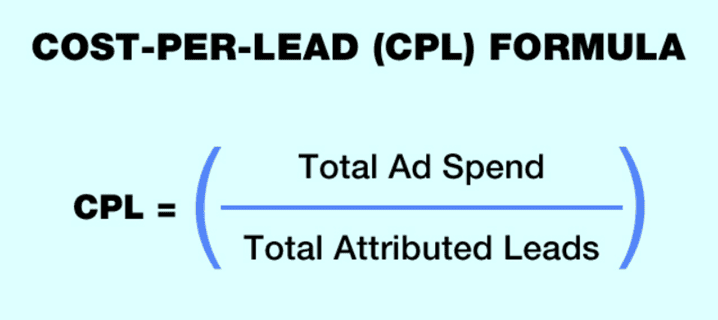
In addition to CPL, CPA marketers come across various offers, including options like CPC (Cost Per Click) and CPM (Cost Per Mille), in addition to traditional CPL deals:
- CPS (cost per sale) - the advertiser pays a fixed rate per sale, regardless of product cost.
- RevShare - unlike CPS, the advertiser shares a percentage of all purchases and payments from the affiliate's referrals. Reputable advertisers do this for the customer's lifetime value.
- CPI (cost per install) - payout per app install.
- CPM (cost per mile) - payout per 1,000 ad impressions, tracked via software.
- CPC (cost per click) - payout each time someone clicks an ad link.
What Types of Businesses Does CPA Advertising Work For?
The most important thing when assessing if CPA affiliate marketing is right for a business is the ability to track the target action. In other words, analytics need to be set up on the site. Below, we outline the criteria where affiliate marketing will be effective for a company:
- The product cost is in the low or medium price range. Selling a casino in Las Vegas through an affiliate marketing program is impossible. However, promoting online casino offers is quite feasible with cost per action marketing.
- The product targets the B2C market, not other businesses. For example, it's extremely difficult to market a platform aggregating traffic to online dating sites via affiliate marketing. Meanwhile, promoting dating offers from that platform is fairly straightforward.
- Product logistics are established across a large region or countrywide. Affiliate marketers are more interested in promoting products to a broad audience rather than a niche market like a specific city. This applies to affiliate programs like weight loss, sexual health, anti-aging, etc.
- The business provides bonuses, discounts, promotions, and gifts - "buy 2, get 3 free", "10 free spins", and so on.

So we can conclude, CPA works excellently for advertising the following:
- Mobile games and various software - cost per install model.
- Banking products and insurance company online services - CPL (single opt-in) model.
- Travel firms and real estate agencies - cost per lead SOI and DOI models.
- Training programs and courses - cost per sale or cost per lead SOI models.
- Online store products - CPS model.
- Promoting new brands - CPM model.
- Gambling and betting - CPA and revenue share models
It makes no sense to use affiliate marketing to promote products that have one of the following characteristics:
- High ticket price. As a general rule: $50+ for Tier 2-3 countries and $100+ for Tier 1. But this mainly applies to consumer goods, where average order values are much lower than those amounts, like nutraceutical products. A smartphone costing a few hundred bucks or "get rich quick" courses can sell great through CPA.
- B2B focused product. Selling to businesses involves multiple negotiations to agree on pricing, delivery terms, etc. CPA products are more impulse buys based on emotions from the promo creative or landing page.
- Exclusive goods - antiques, handmade items, art. CPA targets mass audience groups. So the cost per lead or sale for Rembrandt painting replicas will be astronomically high given the ultra-narrow audience of fine art connoisseurs.
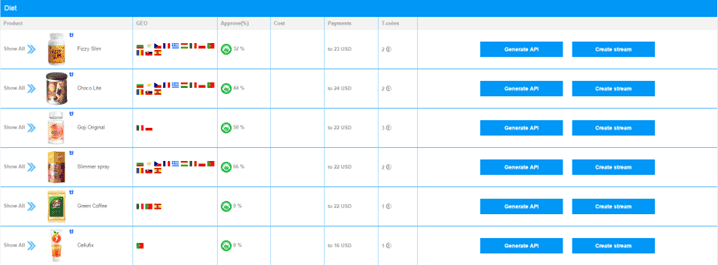
Traffic sources in CPA marketing
Own Websites and Social Media Channels
Affiliates use various sources to drive traffic to advertiser offers. One popular method is placing ads on their own websites - either banner ads or native advertising like links leading to the offer landing page. All you have to do is find offers that relate to your niche, and use your website as the best CPA marketing site option to acquire and direct traffic to the offer.
Another strategy is monetizing their existing social media audience on platforms like Facebook, Instagram, YouTube, TikTok, and Pinterest. For example, an influencer can post a video reviewing the product or sharing their experience using it. They include a referral link in the video description or channel header.
When followers click that link on the site and complete the target action, the influencer earns a commission from the affiliate program. Just like with their own sites, affiliates can generate income from their social media followings.
Additionally, if the affiliate owns an email list. He can use email marketing to promote affiliate programs and make instant revenue. An approach combining your best CPA marketing website and email marketing is a great way to generate traffic organically and earn passive income from CPA digital marketing.
Flipping Third-Party Traffic (Traffic arbitrage)
Some affiliates don’t have a marketing website, blog, or large audience. Instead, they purchase cheap traffic from different sites and resell it to advertisers at higher prices. This practice of leveraging third-party traffic sources for profit is known as traffic arbitrage.
To acquire cheap traffic, affiliates use strategies like:
- Posting on online bulletin boards and forums
- Emailing marketing messages to purchased user databases
- Placing contextual ads on high-traffic websites
- Running targeted ads on search engines and social networks

To promote "gray hat" affiliate programs that are prohibited on social networks and search engines, affiliates use:
- Mobile apps where the landing page link is blocked. App store moderators see permitted "white hat" content only. The actual landing page opens for the target user.
- Link cloaking allows traffic to go through but blocks moderators from seeing the destination based on certain criteria.
- Doorway pages are built specifically to rank high in search results. Users get redirected from these one-page sites to the offer landing page
Advertising networks
Ad networks are another key traffic source worth calling out. The main difference between advertising networks and social or search traffic sources is that advertising networks make it very easy for affiliates to run campaigns. Ad networks want affiliates to succeed since they make money by selling them traffic.
Some ad networks are streamlining things for partners. For example, MyBid has a fully managed platform with dedicated affiliate managers. The affiliate essentially funds their ad account and works with the manager on the bid price and campaign approach.
The manager handles setup, optimization, scaling, and everything technical.
Affiliates can leverage popular ad formats like In-Page Push and Popunder through ad networks. See here and the screenshot below for more ad format details.

Conclusion
CPA or cost-per-action marketing lets businesses promote through an intermediary without building an in-house advertising team. It also allows precise marketing budgeting, avoiding spend without results. Companies only pay affiliates after seeing real ROI in the form of metrics or leads.
For website and social media account owners, CPA enables monetizing their audience by promoting CPA marketing affiliate programs. For affiliates, CPA lets them profit by buying traffic cheaply and selling it for more.
Facebook and Google have high financial barriers to entry and require technical expertise to moderate campaigns. Ad networks like MyBid help CPA marketing beginners by assigning them account managers who are experts in handling the technical aspects. It also makes sense for new affiliates to start with ad networks, since the cost to get started is relatively low. On MyBid for example, clicks start at just $0.00003.


